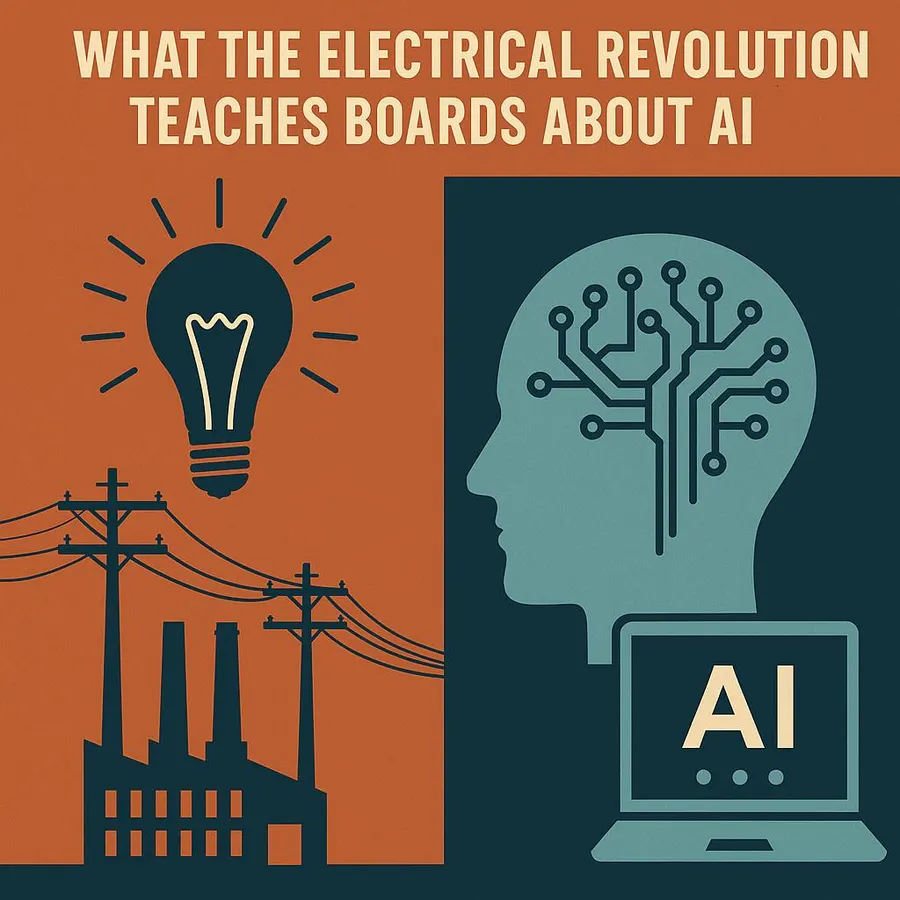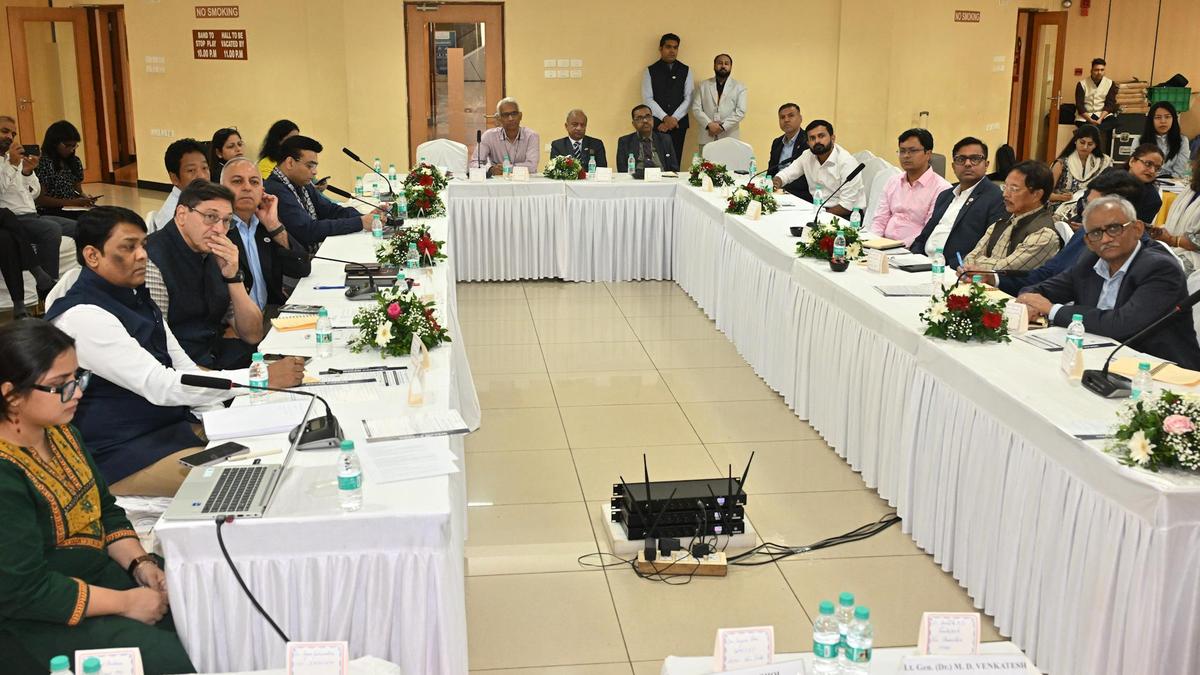Copyright forbes

What the Electrical Revolutions Teaches Boards About AI Solange Charas, PhD, HCMoneyball When industrial civilization first flicked the switch on electric power, it wasn’t simply a matter of replacing gas lamps with light bulbs. Between roughly 1870 and 1914, the Electrical Revolution rewired whole economies, factory floors and labor markets. Inventors, power companies, labor unions and governments tangled in what became known as the “War of the Currents” between Thomas Edison’s DC systems and Nikola Tesla/George Westinghouse’s AC system. The battle concluded not simply because AC won on efficiency, but because the system around it—generation, transmission, regulation and workforce training—matured. (See e.g., the timeline of electrification of the U.S. grid.) (POWER Magazine) Today, we are in the early innings of a similar transformation: the AI Revolution. Rather than powering motors and lamps, it powers large language models, autonomous systems and digital platforms. But like the first revolution, this one will succeed or fail based on how well organizational leadership handles three interlocking domains: governance, finance/infrastructure, and human capital. Governance Lessons from the Grid In the early 1900s, simply installing electric motors wasn’t enough. Regions that succeeded were the ones that developed entire ecosystems—generation plants, local distribution networks, skilled labor, safety regulations and cooperative financing models. For example, the creation of the Rural Electrification Administration (REA) in the U.S. made long-term loans to electric cooperatives in under-served areas, enabling rural households to connect and share risk. The lesson for boards: AI isn’t just a technology roll-out. It is also about establishing the institutions—data governance, ethics frameworks, energy-use contracts, regulatory compliance and cross-functional oversight. Without that institutional maturity, “AI projects” risk becoming stranded assets or worst, mission-drift liabilities. Finance Meets Power: Infrastructure is Strategic In the electrification era, one of the biggest productivity gains came when electric motors replaced steam-driven belt systems in factories. Empirical research shows that firms that adopted electric power early achieved higher output growth than those that delayed. (ScienceDirect) MORE FOR YOU Fast-forward to 2025: Generative AI and large-scale computers require massive energy and infrastructure. According to the International Energy Agency (IEA), electricity demand from data centers is set to more than double by 2030, rising to around 945 terawatt-hours globally. (Forbes.com) In the U.S. alone, data centers belong to about 4 % of national electricity use today—but could reach 12 % by 2030. (Visual Capitalist) For the finance executive and board, this spells three imperatives: Treat data-center location and power-contract strategy like a long-horizon capital decision, not a “cloud-vendor negotiation.” Ensure energy supply, cooling infrastructure and grid-risk are part of the business-case model. Align the “power cost” of AI with overall human-capital and productivity ROI metrics — it’s not simply about compute cost, but the interplay of compute, people and purpose. Human Capital as Conductor The electrical era spun out entire new occupations: electricians, utility-managers, appliance-repair technicians, factory supervisors. At the same time, legacy roles were displaced — candle-makers, ice-deliverers, horse-carriage drivers. Labor unrest followed: the 1919 steel strike involved roughly 350,000 workers protesting 12-hour shifts enabled by electrification. Today’s parallels are striking: AI is creating new roles in data-center operations, renewable-energy engineering, AI-ethics and human-machine collaboration, while also threatening displacement of routine cognitive work. Empirical studies in manufacturing show that the productivity benefits of electrification were large, but the gains only materialized when workers—and institutions—were re-skilled. For HR, finance and governance leaders working together, the take-away is that human-capital ROI must be viewed through the combined lens of skills investment + infrastructure shift + governance mechanisms. A board needs to ask: Do we have an “AI literacy” program? Do we have mechanisms for redeployment of roles? Do we connect AI adoption to human-capital metrics (turnover, productivity, diversification, inclusion)? AI adoption decisions are often made in “ready-fire-aim” fashion—implemented before organizations fully grasp the systemic consequences of automating or augmenting human judgment. When firms substitute human capabilities with algorithms too quickly, they risk not only workforce disruption but also erosion of customer trust, ethical lapses, and long-term brand damage. Research published by Cornell University found that over-automation in customer service reduced satisfaction scores by more than 20% as customers reported frustration with chatbots unable to resolve nuanced issues. In the financial sector, trading algorithms that replaced human oversight have repeatedly triggered flash crashes, including the 2010 Dow Jones plunge that erased nearly $1 trillion in minutes before rebounding (SEC Report). Even Amazon’s now-abandoned AI recruiting tool offers a cautionary tale: trained on historical data, it inadvertently encoded gender bias into hiring decisions (Reuters). These examples underscore that the cost savings of automation can evaporate when reputational risk, compliance exposure, and human judgment failures are considered. Governance should therefore incorporate disciplined scenario analysis before replacing or augmenting humans with AI—an integrated assessment that quantifies not just cost reduction but the second- and third-order impacts on governance quality, customer experience, and institutional resilience. The New Electrical Equation: Sustainability, Scale & Speed One difference between 1910 and 2025: The sustainability imperative. The original electrical age rode on coal and created ecological burdens that only became apparent decades later. Today, the AI infrastructure boom is colliding with climate-goals. Some estimates suggest data-center power demand could equal or exceed the entire electricity consumption of countries like Germany or France by 2030. (IMF) Boards must therefore include “energy strategy” in their AI-governance agenda: Secure clean-power contracts and encourage data-center construction in regions with renewables. Include decarbonization KPIs in AI-project business cases. Understand that energy cost, carbon footprint and productivity gains are interconnected in human capital-rich organizations. Conclusion: Measuring Transformation, Not Just Technology Electrification didn’t just change machines—they changed how organizations worked, how labor was organized, how finance was allocated and how governance evolved. The productivity leap came not from the motor but from the ecosystem around it. Today’s AI transformation demands the same systems thinking. Boards and senior executives in HR, finance and governance must collaborate around human-capital metrics, infrastructure risk, energy strategy and governance architecture. Because when the boardroom treats AI as just another software roll-out, they miss the moment. When they treat it as the next electrification—with all its consequences—they guide transformation. In short: The light bulb never lit the future by itself. It was humanity, wires and institutions working together. The same is true of AI. This article was inspired by an earlier blog co-authored with Stela Lupushor, as part of our ongoing series connecting historical revolutions to AI workforce transformation. This column presents original framing and governance-focused analysis suitable for Forbes. Editorial StandardsReprints & Permissions



